Study of Time and Meteorological Characteristics of Wind Speed Correlation in Flat Terrains Based on Operation Data
Abstract
:1. Introduction
2. General Calculation Process of WSC Coefficient
2.1. Description of WSC
2.2. Classification, Extraction and Cleaning & Sorting for Wind Speed Operation Data
2.3. Calculation Flow of WSC between Wind Turbines
3. Case Analysis
3.1. Wind Speed Data Samples and Their Cleaning & Sorting
3.2. Time and Meteorological WSC Calculation and Characteristic Analysis
3.2.1. WSC at the Monthly Time Scale
3.2.2. WSC at the Daily Time Scale
3.2.3. WSC at the Hourly Time Scale
3.2.4. WSC of Different Wind Speed Ranges
3.2.5. WSC of Different Wind Direction Zones
4. Discussion and Outlook
- The WSC shows an obvious seasonal trend. In Figure 5 of the case analysis part, the correlation coefficient between wind turbines decreased from 0.9 to 0.6 in the second half of the year and rose to 0.85 in the first half of the year;
- The WSC at the daily time scale shows dynamic fluctuations, and in some periods of the day it changes considerably. As presented in Figure 6, the correlation coefficient has a fluctuation of up to 0.3 on different dates of the month, and the correlation coefficient of two wind turbines can reach more than 0.3 on the same date in different months;
- The WSC between wind turbines is largely affected by wind speed and wind direction. As shown in Figure 7, for wind speeds of over 8 m/s, the correlation coefficient of wind turbines can be up to 0.94, and it might be as low as 0.7 for a low wind speed. In Figure 8, the southwest and northwest wind direction zones have an obviously higher WSC coefficient than other wind direction zones, reaching 0.95. For the dominant wind direction and medium-high wind speeds (8~18 m/s), wind turbines show strong consistency.
- For different follow-up applications of WSC, it is necessary to calculate the correlation between wind turbines under different dimensions.
- Wind turbines should be grouped dynamically according to the WSC coefficients at different time scales. While making wind speed/wind power predictions, we need to distinguish between low and high wind speeds, dominant and non-dominant wind directions.
5. Conclusions
Author Contributions
Conflicts of Interest
References
- Guo, Y.; Gao, H.; Wu, Q. A Combined Reliability Model of VSC-HVDC connected Offshore Wind Farms Considering Wind Speed Correlation. IEEE Trans. Sustain. Energy 2017, 8, 1637–1646. [Google Scholar] [CrossRef]
- Ding, Y.; Singh, C.; Goel, L.; Ostergaard, J.; Wang, P. Short-Term and Medium-Term Reliability Evaluation for Power Systems with High Penetration of Wind Power. IEEE Trans. Sustain. Energy 2014, 5, 896–906. [Google Scholar] [CrossRef]
- Yang, T.; Wang, J.; Song, S.S.; Liu, C.X. Dynamic Economic Dispatch of Power System Considering the Correlation of the Wind Speed. Trans. China Electrotech. Soc. 2016, 31, 189–197. [Google Scholar]
- Bechrakis, D.A.; Sparis, P.D. Correlation of wind speed between neighboring measuring stations. IEEE Trans. Energy Convers. 2004, 19, 400–406. [Google Scholar] [CrossRef]
- Peng, X.; Zheng, W.; Zhang, D.; Liu, Y.; Lu, D.; Lin, L. A novel probabilistic wind speed forecasting based on combination of the adaptive ensemble of on-line sequential ORELM (Outlier Robust Extreme Learning Machine) and TVMCF (time-varying mixture copula function). Energy Convers. Manag. 2017, 138, 587–602. [Google Scholar] [CrossRef]
- Ye, L.; Zhao, Y.; Zeng, C.; Zhang, C. Short-term wind power prediction based on spatial model. Renew. Energy 2017, 101, 1067–1074. [Google Scholar] [CrossRef]
- Qin, Z.; Li, W.; Xiong, X. Generation system reliability evaluation incorporating correlations of wind speeds with different distributions. IEEE Trans. Power Syst. 2013, 28, 551–558. [Google Scholar] [CrossRef]
- Chen, N.; Qian, Z.; Meng, X. Multi-step Ahead Speed Forecasting Model Based on Spatial Correlation and Support Vector Machine. Trans. China Electrotech. Soc. 2013, 28, 15–21. [Google Scholar]
- Chen, F.; Li, F.; Wei, Z.; Sun, G.; Li, J. Reliability models of wind farms considering wind speed correlation WSC and WTG outage. Electr. Power Syst. Res. 2015, 119, 385–392. [Google Scholar] [CrossRef]
- Xie, M.; Xiong, J.; Liu, M. Modeling of multi wind farm output correlation based on Copula and its application in power system economic dispatch. Power Syst. Technol. 2016, 40, 1100–1106. [Google Scholar]
- Zhou, Y.; Smith, S.J. Spatial and time patterns of global onshore wind speed distribution. Environ. Res. Lett. 2013, 8, 034029. [Google Scholar] [CrossRef]
- Salmon, J.R.; Walmsley, J.L. A two-site correlation model for wind speed, direction and energy estimates. J. Wind Eng. Ind. Aerodyn. 1999, 79, 233–268. [Google Scholar] [CrossRef]
- Li, Y.; Xie, K.; Hu, B. A Copula function-based dependent model for multivariate wind speed time series and its application in reliability assessment. Power Syst. Technol. 2013, 37, 840–846. [Google Scholar]
- Li, P.; Guan, X.; Wu, J.; Zhou, X. Modeling Dynamic Spatial Correlations of Geographically Distributed Wind Farms and Constructing Ellipsoidal Uncertainty Sets for Optimization-Based Generation Scheduling. IEEE Trans. Sustain. Energy 2015, 6, 1594–1605. [Google Scholar] [CrossRef]
- Damousis, I.G.; Alexiadis, M.C.; Theocharis, J.B.; Dokopoulos, P.S. A fuzzy model for wind speed prediction and power generation in wind parks using spatial correlation. IEEE Trans. Energy Convers. 2004, 19, 352–361. [Google Scholar] [CrossRef]
- Li, Y.; Li, W.; Yan, W.; Yu, J.; Zhao, X. Probabilistic optimal power flow considering correlations of wind speeds following different distributions. IEEE Trans. Power Syst. 2014, 29, 1847–1854. [Google Scholar] [CrossRef]
- Fan, R.; Chen, J.; Duan, X.; Li, H.; Yao, M. Impact of wind speed correlation on probabilistic load flow. Autom. Electr. Power Syst. 2011, 35, 18–22. [Google Scholar]
- Xie, K.; Billinton, R. Considering wind speed correlation of WECS in reliability evaluation using the time-shifting technique. Electr. Power Syst. Res. 2009, 79, 687–693. [Google Scholar] [CrossRef]
- Qin, Z.; Li, W.; Xiong, X. Reliability assessment of composite generation and transmission system considering wind speed correlation. Autom. Electr. Power Syst. 2013, 37, 47–52. [Google Scholar]
- Xue, Y.; Chen, N.; Wang, S.M.; Wen, F.S.; Lin, Z.Z.; Wang, Z. Review on Wind Speed Prediction Based on Spatial Correlation. Autom. Electr. Power Syst. 2017, 41, 161–169. [Google Scholar]
- Chen, N.; Xue, Y.; Ding, J.; Chen, Z.L.; Wang, X.Z.; Wang, N.B. Ultra-short Term Wind Speed Prediction Using Spatial Correlation. Autom. Electr. Power Syst. 2017, 41, 124–130. [Google Scholar]
- Zhang, S.M.; Dong, M.; Wang, B.Y. Application of Big Data Processing Technology in Fault Diagnosis and Early Warning of Wind Turbine Gearbox. Autom. Electr. Power Syst. 2016, 40, 129–134. [Google Scholar]
- Li, C.; Shen, Z.; Meng, K.F.; Yin, S.; Yan, M. Filter Method of Fitting Data of Wind Turbine Power Curve based on Skewness Index. In Proceedings of the 2013 China Electrical Engineering Society Annual Meeting, Chengdu, China, 21 November 2013; pp. 1–5. [Google Scholar]
- Chang, T.P.; Liu, F.J.; Ko, H.H.; Huang, M.C. Oscillation characteristic study of wind speed, global solar radiation and air temperature using wavelet analysis. Appl. Energy 2017, 190, 650–657. [Google Scholar] [CrossRef]
- Lin, Q.; Wang, J. Vertically Correlated Echelon Model for the Interpolation of Missing Wind Speed Data. IEEE Trans. Sustain. Energy 2014, 5, 804–812. [Google Scholar] [CrossRef]
- Sun, C.; Bie, Z.; Xie, M.; Jiang, J. Fuzzy Copula model for wind speed correlation and its application in wind curtailment evaluation. Renew. Energy 2016, 93, 68–76. [Google Scholar] [CrossRef]
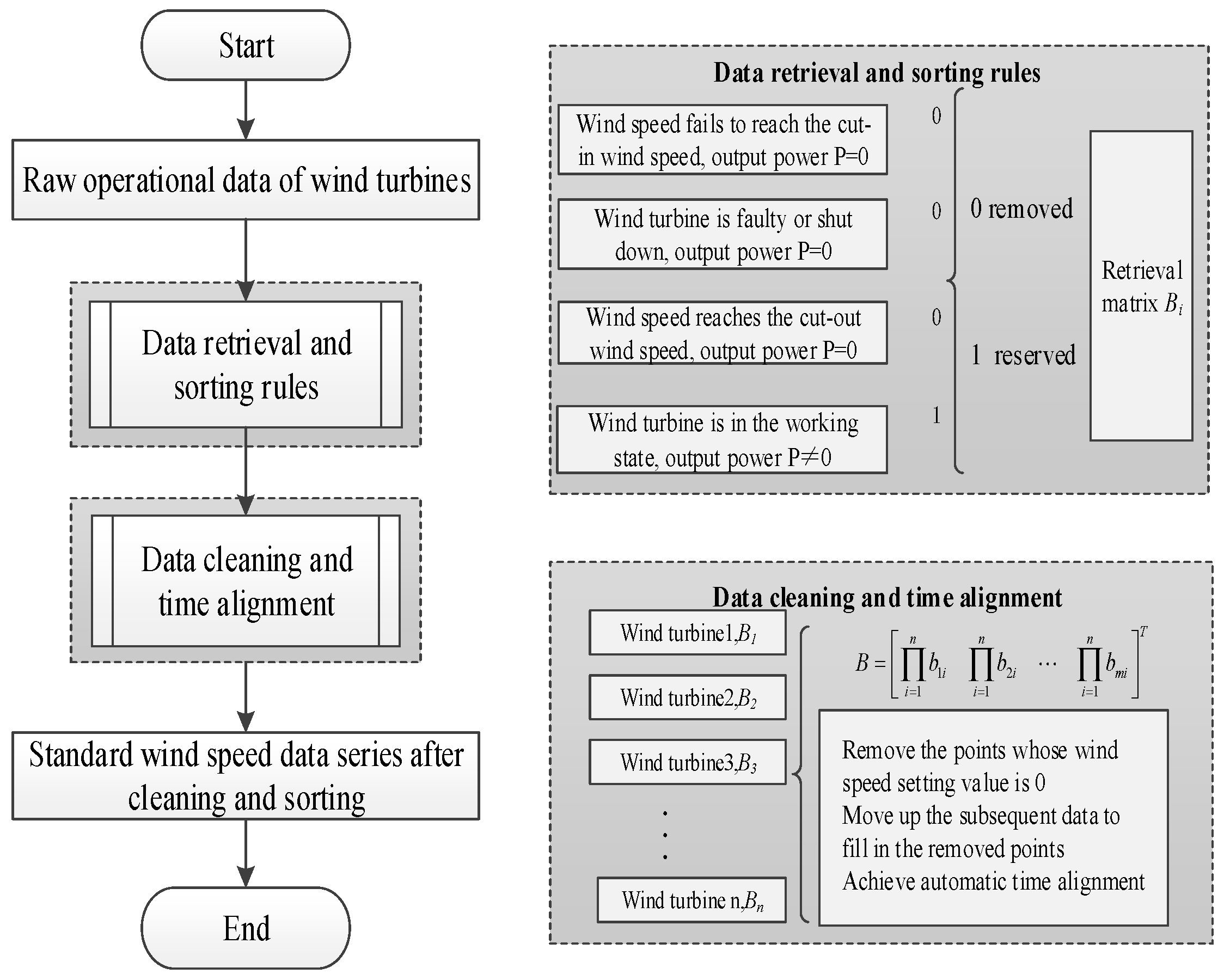
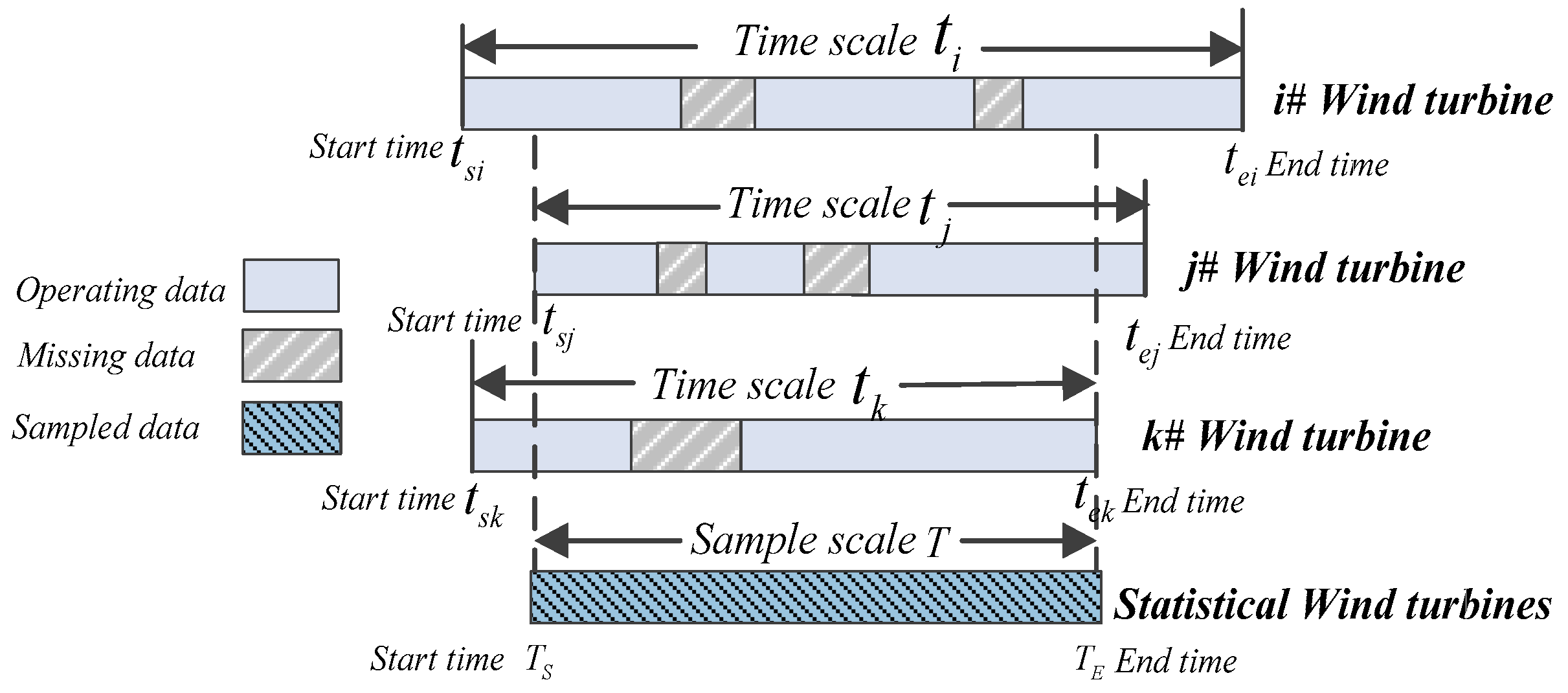
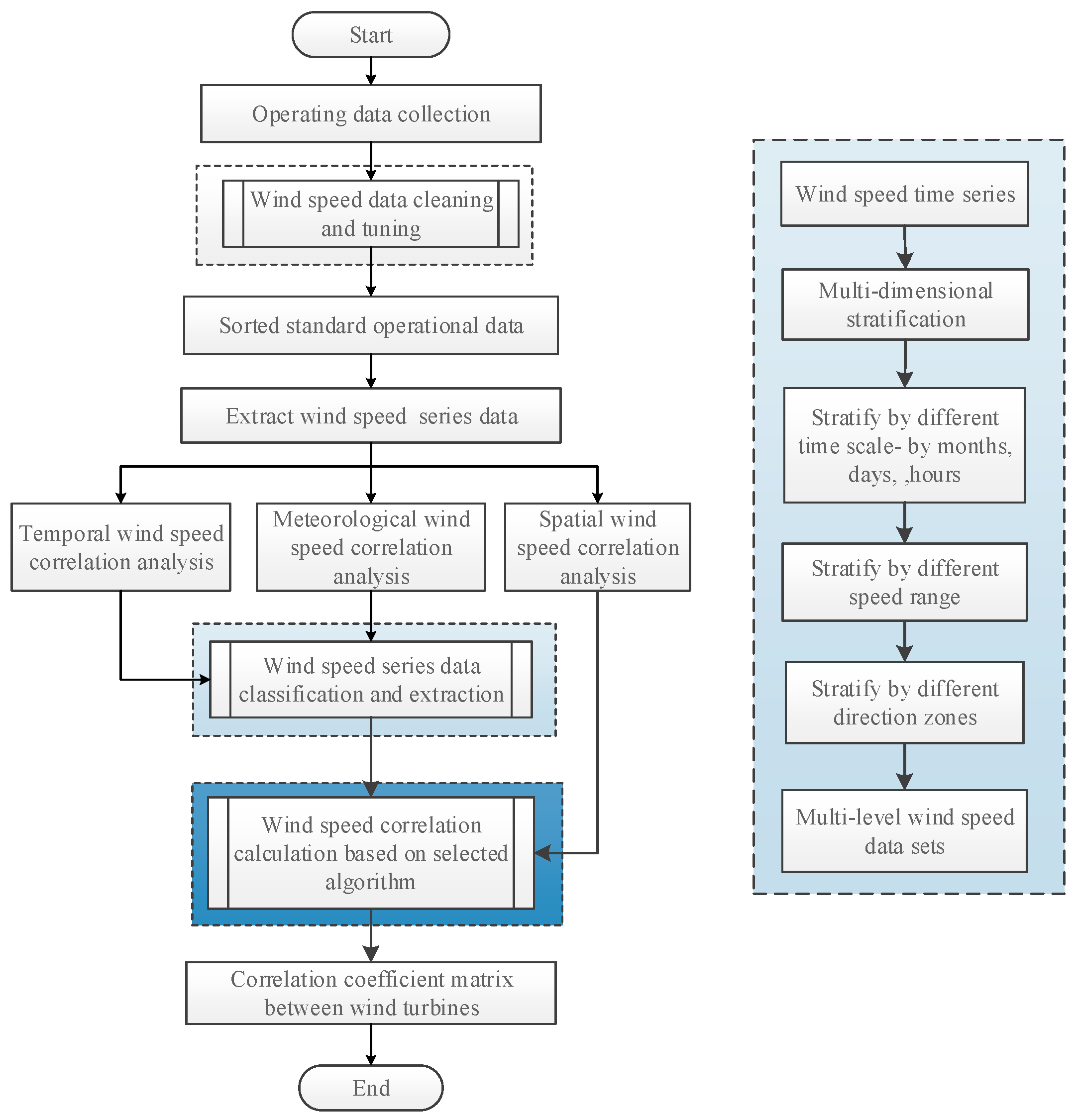
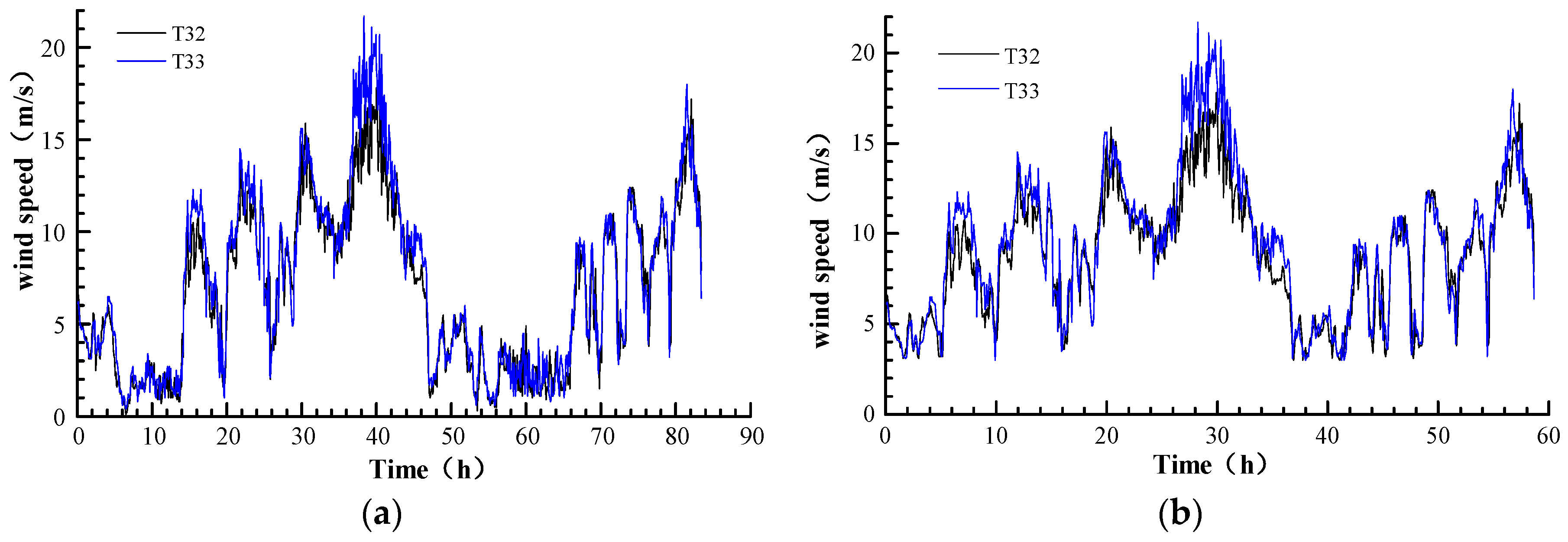



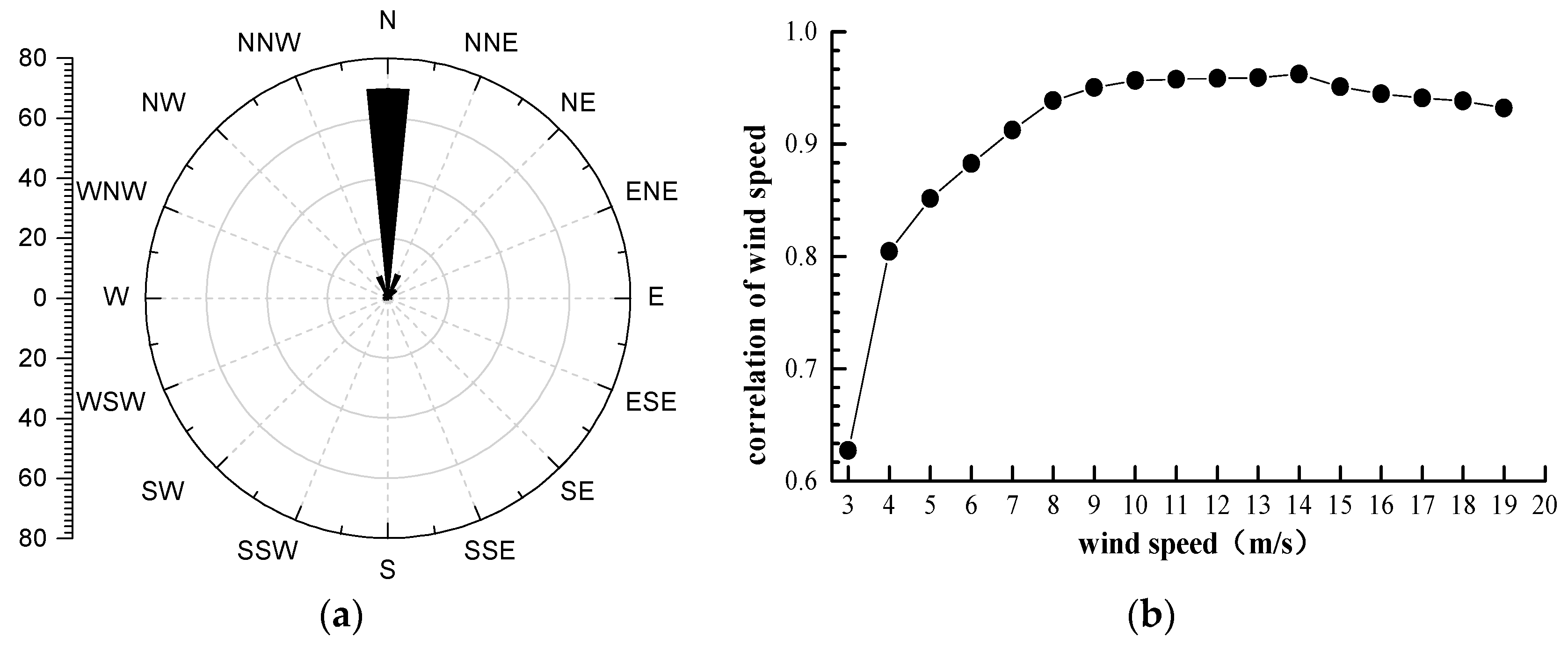






© 2018 by the authors. Licensee MDPI, Basel, Switzerland. This article is an open access article distributed under the terms and conditions of the Creative Commons Attribution (CC BY) license (http://creativecommons.org/licenses/by/4.0/).
Share and Cite
Shen, X.; Zhou, C.; Fu, X. Study of Time and Meteorological Characteristics of Wind Speed Correlation in Flat Terrains Based on Operation Data. Energies 2018, 11, 219. https://doi.org/10.3390/en11010219
Shen X, Zhou C, Fu X. Study of Time and Meteorological Characteristics of Wind Speed Correlation in Flat Terrains Based on Operation Data. Energies. 2018; 11(1):219. https://doi.org/10.3390/en11010219
Chicago/Turabian StyleShen, Xiaojun, Chongcheng Zhou, and Xuejiao Fu. 2018. "Study of Time and Meteorological Characteristics of Wind Speed Correlation in Flat Terrains Based on Operation Data" Energies 11, no. 1: 219. https://doi.org/10.3390/en11010219



